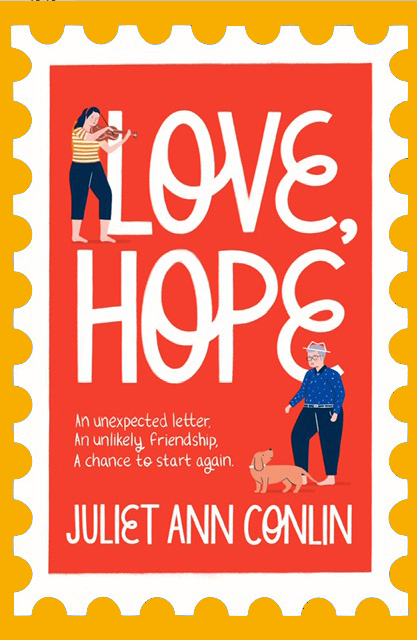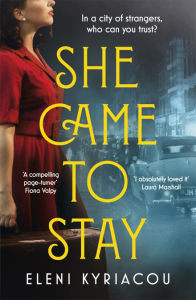
Today’s post is by author Amy L. Bernstein.
Admit it. You love to read novels. But every so often, you start a book you cannot bring yourself to finish. Perhaps you close it gently and with regret, maybe a tinge of guilt. Other times, perhaps you want to throw the book across the room in frustration.
Every reader has a DNF (did not finish) list. I will not share mine with you here, but trust me, it’s not short! And every book—no matter how popular—has its own legion of DNF readers.
Consider, for example, a well-known bestseller like Station Eleven by Emily St. John Mandel. More than half a million reviews are posted on Goodreads alone. Over 20,000 of those are two-star reviews and more than 7,000 are one-star reviews. One disenchanted reader summed up the book this way: “SNOOZE!!!” Clearly, that reader is not alone.
As the 15th-century English monk and poet John Lydgate once wrote (italics mine), “You can please some of the people all of the time, you can please all of the people some of the time, but you can’t please all of the people all of the time.”
In literature, as in life, there is no accounting for taste and not every book is for every reader. But as an aspiring or published novelist, one thing is certain: You want to do everything in your power to keep your book out of the DNF Book Club. Your readers will have the last word, of course, but there’s no point in giving them reasons to hurl your precious creation into a blazing fireplace.
I did some digging to learn if the DNF issue could be quantified. According to the widely cited 2022 American Reading Habits Survey, more than half (52%) of 2,000 American adults surveyed reported they did not read a full book over the course of a year. And nearly 29% reported never finishing a book they started reading.
In 2023, the same research source reported that the average American adult citizen (the term is not defined) starts 12.6 books per year but only completes 5 of them.
And according to ThinkImpact, an educational research organization, the median number of books started and not necessarily completed per year among readers aged 15 to 65 or older, is four.
Assuming there’s at least a grain of truth in these statistics, the implications are fairly sobering. As an author, what steps can you take to write a book that the vast majority of readers will want to read all the way through?
I’m sharing a checklist that I think of as a set of avoidable (or unforced) errors. You can’t anticipate all the reasons a reader may not finish your book, but you can strive to avoid the biggest DNF red flags.
1. Make the character connection
Readers must find someone in your story—hero, anti-hero, or villain—to relate to, root for, or pin their hopes on either to succeed (in the hero’s case) or to fail (in the villain’s). That connection is usually forged through emotional empathy, which is quite “sticky” in terms of holding the reader’s interest, even if other elements are less well imagined. The deepest connections usually arise from complex, well-drawn characters and relationships where the story opens up not only who they are but how they cope. And the stickiness factor grows stronger when the reader lands on others to care about, such as a child in peril or an aged grandparent seeking a graceful death. Absent the character connection, the reader is apt to feel on the outside looking in, and that doesn’t bode well for reading to the end.
2. Maintain high stakes right until the end
Generally speaking, novels are bigger and bolder than real life. (Fredrik Backman may be an exception who proves the rule.) Readers crave life-and-death stakes; battles that rage across entire galaxies; love affairs where forces conspire against the lovers’ union. Give us big, emotionally potent stakes that raise questions readers demand to be answered by the end of the book (but not before!). Will Elizabeth Bennet ever wise up and see that the man of her dreams is right in front of her? Will astronaut Mark Watney live long enough to leave Mars and return to Earth? Will Ripley continue to get away with murder? The books that keep us reading raise high-stakes questions about all aspects of the human condition and then tantalize us with hints of a resolution—with or without some misdirection along the way. Keeping your readers guessing the outcome of a high-stakes plot is a surefire way to make them finish.
3. Deliver truth in advertising
A big DNF red flag is pulling a bait-and-switch on the reader. Your jacket copy promises, say, a juicy crime thriller featuring a feisty detective; the first 10 pages start off with a bang. And then…the story shifts in ways the reader could not anticipate and may struggle to follow, not because your writing is complex in a literary way, but because you’ve made a dramatic switch in character focus, tone, pacing, point of view, time period, or all of them nearly all at once. Suddenly, your detective vanishes from the page; we’ve left the 21st century for the 17th; pirates show up, and…well, I’m exaggerating to make a point, which is that you haven’t met the reader’s expectations based on the teaser and the book’s setup. Some readers will take this ride with you—but many will not. When your reader orders a red sweatshirt, they don’t expect to receive gray sweatpants instead. Make sure your book reads as advertised and don’t imagine you can capture a reader’s heart by promising to deliver an aspect of your story that is far from the real story you tell—or the way you promise to tell it.
4. Avoid the doldrums
The best literary fiction gives readers access to dense description, interior psychological states, and philosophical ruminations. God bless Henry James, A. S. Byatt, and everyone in between. Chances are your book isn’t purely literary and your readers prefer something a bit more lively and plot-forward. The greatest disservice you can render them, therefore, is to bore them. But that’s what you’ll do if you do not strike a fair balance between scenes that keep the story and characters moving and scenes that devolve into lengthy exposition and/or detailed backstory that turns into info-dumping, thus slowing your book to a crawl rather than deepening its mysteries and meanings. A little of all that goes a long way. Your readers may put up with a few of these detours, but if you insert too many, you’ll test their patience and surely lose many before the last page.
5. Hone your razorblade
There’s a good reason many agents and publishers these days rarely take chances on long books (say, over 100,000 words) from debut or lesser-known authors: Readers don’t want to read them and/or don’t have time to do so. Have you ever found your heart sinking when you notice on your Kindle that you’re only 8 percent of the way through an ebook that’s already making you weary? Not a good sign. Your job is to prune your manuscript ruthlessly; cut the fat; keep excitement and purpose on every page; and don’t overwrite, state the obvious, or include redundancies. Credit your reader’s intelligence and make them lean into the story.
6. Honor your genre
Nothing kills a reader’s interest faster than a broken (or irretrievably violated) trope within a beloved genre. If you’re writing a thriller, horror, fantasy, romance, cozy mystery, or other clearly delineated fiction genre, your North Star is to satisfy the reader’s need for, and expectation of, familiar plot progressions, genre-compatible protagonists, and satisfying (and somewhat expected) resolutions. Go ahead and introduce twists and surprises; bend conventions a bit; have fun with expectations; but give readers what they crave in the end. This is one bargain with your readers you cannot afford to toy with, or they may indeed toss your book across the room.
Don’t bite the hand that feeds
Writers often set out to write the kind of book they would like to read. You know what writers don’t do? They don’t set out to write a book they themselves would abandon as readers because it’s dull or plotless or the characters are too shallow to care about.
As you write, ask yourself if you’re giving your future reader easy reasons to stop reading. To be sure, you’re not a mind reader and readers can be fickle. But that’s all the more reason to do all you can to reel them in and keep them happy right up until THE END.

Amy L. Bernstein is an eclectic practitioner of literary arts—a multi-genre novelist, award-winning journalist, speechwriter, playwright, poet, and certified nonfiction book coach. Amy also teaches writing workshops and is a frequent guest on podcasts to discuss writing, publishing, and creativity. She brings a compassionate and insightful voice to the challenges and joys of the artistic process. Her nonfiction book, Wrangling the Doubt Monster: Fighting Fears, Finding Inspiration, goes on pre-sale shortly. Learn more here.






